The OnePlus Watch 2R blew my low fitness expectations out of the water
Both of our OnePlus Watch 2 reviewers had problems with its fitness data; so far, the Watch 2R doesn't have those same issues.

Marketing for the new OnePlus Watch 2R styles it as a sporty, long-lasting Wear OS watch for "inspiring an active lifestyle," with a lighter design for "those who value all-day fitness" tracking. I love watches that cater directly to me, but my colleagues who tested the OnePlus Watch 2 bashed its health data as its Achilles' heel. So I decided to test the Watch 2R accuracy for myself.
With the original OnePlus Watch 2, our reviewer Harish complained that it "just isn't reliable at daily step counts or activity tracking," that it misjudged burned calories after workouts, and that its stress data was artificially elevated.
Meanwhile, my colleague Nick did a one-week OnePlus Watch 2 test and had similar complaints about underestimated steps and significantly lower HR numbers during anaerobic workouts. Both Nick and Harish suspected that the watch used its low-power RTOS coprocessor to handle health and fitness sampling and that it wasn't fast or consistent enough to get proper readings.
This made me leery about testing the OnePlus Watch 2R, a fitness watch that theoretically couldn't handle fitness all that well. So, just like my Galaxy Watch Ultra fitness test last week, I strapped on two smartwatches to see how the Watch 2R could match up against my Garmin Forerunner 965 for heart rate and dual-band GPS accuracy.
My OnePlus Watch 2R fitness test

OnePlus' OHealth companion app doesn't let you export TCX/GPX files like Samsung Health, and I had some issues getting Health Connect to send my data properly, so I couldn't do my usual HR or GPS charts for a direct comparison; I'll use tables as an alternative for now.
| Run #1 | OnePlus Watch 2R | Garmin Forerunner 965 |
|---|---|---|
| Distance | 3.05 miles | 3.09 miles |
| Avg. / Max HR | 146 bpm / 159 bpm | 147 bpm / 158 bpm |
| Cadence | 161 steps per minute | 162 steps per minute |
| Stride length | 3.28 feet | 3.35 feet |
| Avg. Vertical Ratio | 8.8% | 8.7% |
| Avg. ground contact time | 301ms | 283ms |
| Burned calories | 318kcal | 421kcal |
For my first jog, the OnePlus Watch 2R stayed mostly on track with the Garmin Forerunner 965. I spot-checked heart rates at ten different timestamps, and the 2R matched the 965 four times and was 1bpm short six times, which dovetails with the 1bpm-lower average.
GPS accuracy mostly remained on point. It's difficult to say if OnePlus' dual-band accuracy is more or less reliable than Garmin's since both maps had me straying off the sidewalk at odd moments, but I appreciated that both fell into the same general ballpark for a run with some signal-blocking foliage.
Be an expert in 5 minutes
Get the latest news from Android Central, your trusted companion in the world of Android
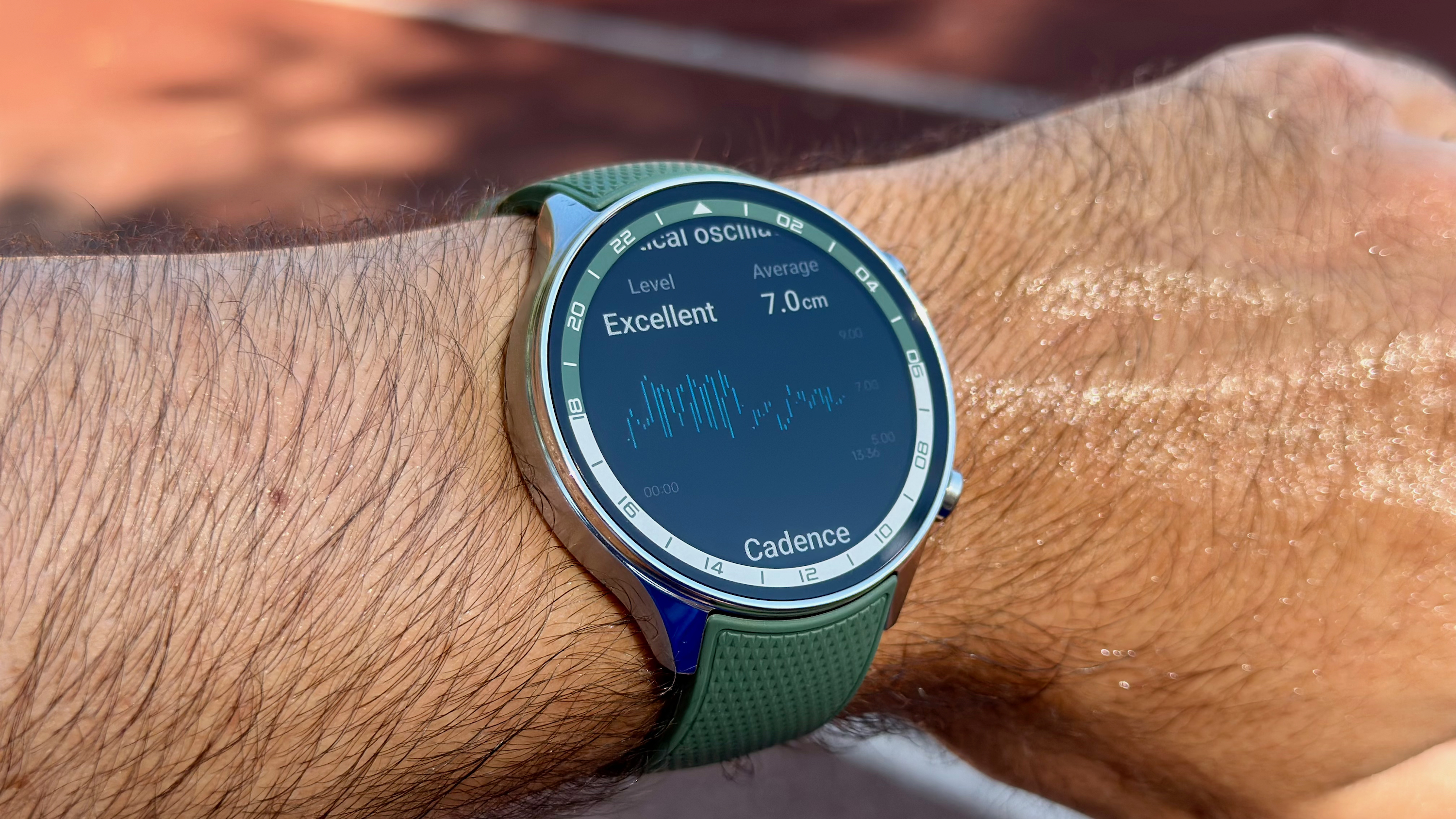
As for running dynamics, the OnePlus Watch 2R synced pretty well for stride length and average vertical ratio, but measured my vertical oscillation as 1cm shorter and average ground contact time as 18ms longer.
| Run #2 | OnePlus Watch 2R | Garmin Forerunner 965 |
|---|---|---|
| Distance | 3,315 meters | 3,220 meters |
| Avg. / Max HR | 174 bpm / 191 bpm | 176 bpm / 191 bpm |
| Cadence | 180 steps per minute | 174 steps per minute |
| Stride length | 4.42 feet | 4.43 feet |
| Avg. Vertical Ratio | 6.0% | 6.6% |
| Avg. ground contact time | 241ms | 223ms |
| Burned calories | 194kcal | 229kcal |
I ran eight 400m laps for my second track run, and Garmin predictably stayed on point because it uses saved track maps to judge your likely location. OnePlus had more issues: the Watch 2R buzzed my wrist with lap or mile times at about the 350m mark, consistently. It was as if the starting point was completely wrong, but then the GPS was pinpoint-accurate when I hit that incorrect spot. Still, it threw my calculated pace off by a decent margin.
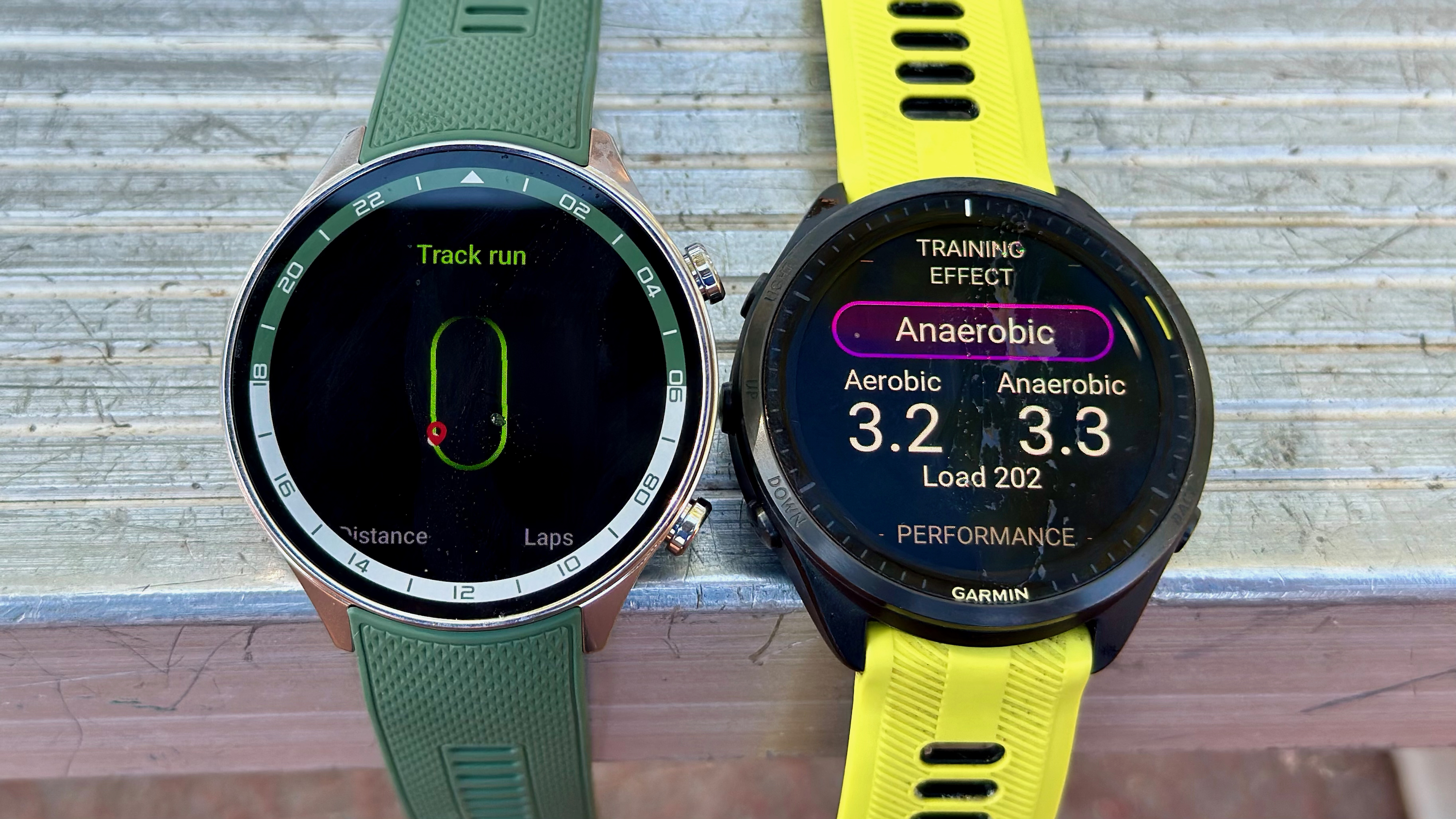
I figured the heart rate for a hard-paced track workout would be the sticking point, but its HR average was more accurate than the Galaxy Watch Ultra during my track workout last week. It certainly fell short of Garmin's results — typically 1–3 bpm short at a given moment — but typically leveled out to the correct number given enough time. Certainly, the Watch 2R did much better than the Watch 2 in this area.
Again, OnePlus' running dynamics data diverged from Garmin in small ways. I don't quite get how OnePlus said I took more steps per minute while leaving my feet on the ground for longer. However, I realized after my run that OHealth had my height listed as 5'7 (I'm 6'1), so maybe that skewed the results for things like vertical oscillation. Regardless, running form data isn't worth obsessing over, in my opinion.
Overall OnePlus Watch 2R fitness impressions
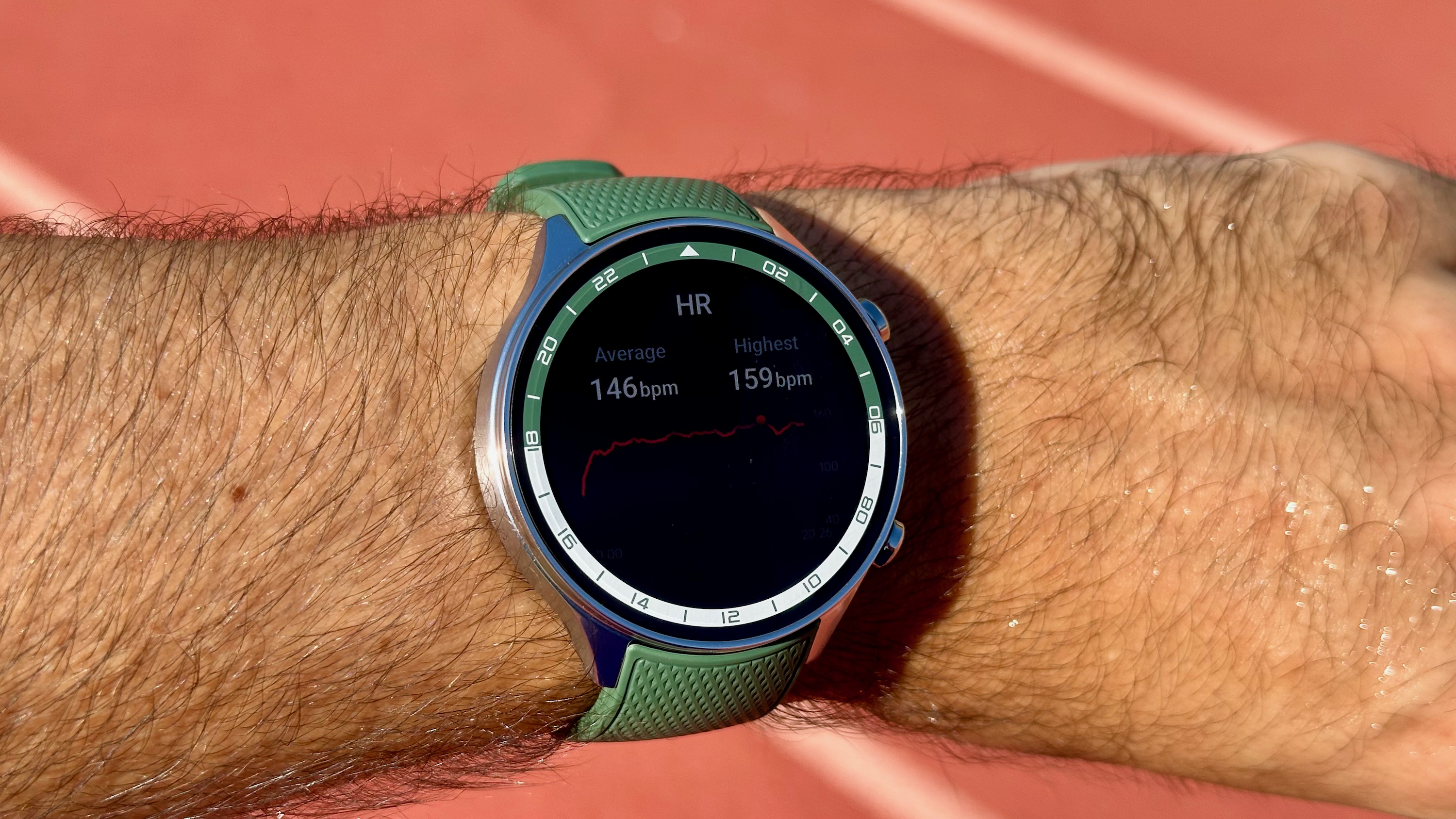
This might simply be a case of low expectations skewing my impressions, but the OnePlus Watch 2R feels like a strong budget fitness watch. It has a comfortable weight for its display size, three-day battery life with Wear OS 4, Google Assistant, and a $229 price tag that I'd expect from an Amazfit watch — not something with proper app support.
OHealth provides some in-depth and surprisingly accessible data for running, offering detailed context for certain stats like training effect, running dynamics, VO2 Max, and recovery time — though Garmin wants me to rest an extra day and has my VO2 Max slightly lower.
That said, it's still quite basic compared to other tie-in fitness apps. OHealth provides a lot of individual run data, but its long-term training load and workout summary data is on the simplistic side. If I used the Watch 2R long-term, I'd most likely auto-sync the data to Strava and rely on that instead.
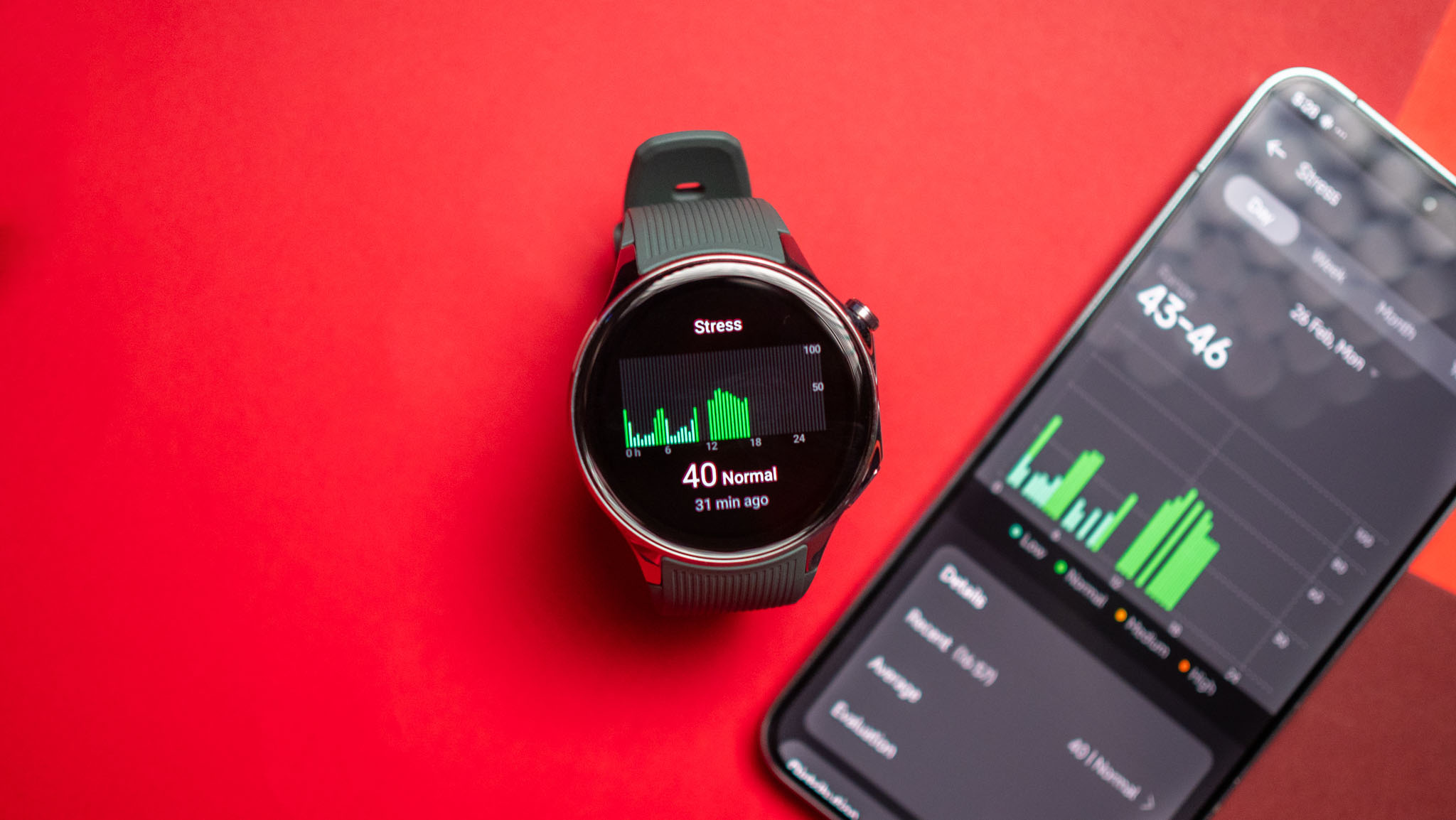
Circling back to my colleagues' complaints about the original OnePlus Watch 2, my final step count across both runs was 11,670 for the Forerunner 965 and 11,560 for the Watch 2R.
Garmin watches beat every other brand in my first and second step-counting tests, so I'll treat the first number as an accurate control group. About 100 steps off across 11,000 steps is almost a rounding error, and significantly better than the OnePlus Watch 2 vs. the Pixel Watch 2 across the same distance (1,860 short). The same goes for my recent Galaxy Watch Ultra test against the Forerunner 965 after 10,000 steps (348 steps short).
OnePlus did underreport my burned calories compared to Garmin, but to be honest, I've never seen any two watch brands agree on how many calories you've burned. I don't know what goes into that algorithm and how to tell which ones flatter or sell you short. So I'm not too fussed about it looking like OnePlus is on the low end, since it's just an estimate.
Really, my biggest complaint with the OnePlus Watch 2R is the same one I have with the Galaxy Watch Ultra: the lack of a crown. OnePlus gave the Watch 2 an inactive crown that spins and does nothing, while the Watch 2 has two simple buttons, one of which pulls up workouts by default unless you change the shortcut. I do appreciate that, but the sweaty-stained displays in the pics above should show why I don't like relying on swipes during workouts. Give me up/down buttons or a crown any day.
I need more time for a full OnePlus Watch 2R review that dives deeper into the health and sleep side of things. But I'm much more bullish about its chances of being worthwhile for casual athletes than I was a week ago -- and matching up against the best cheap Android watches for quality.
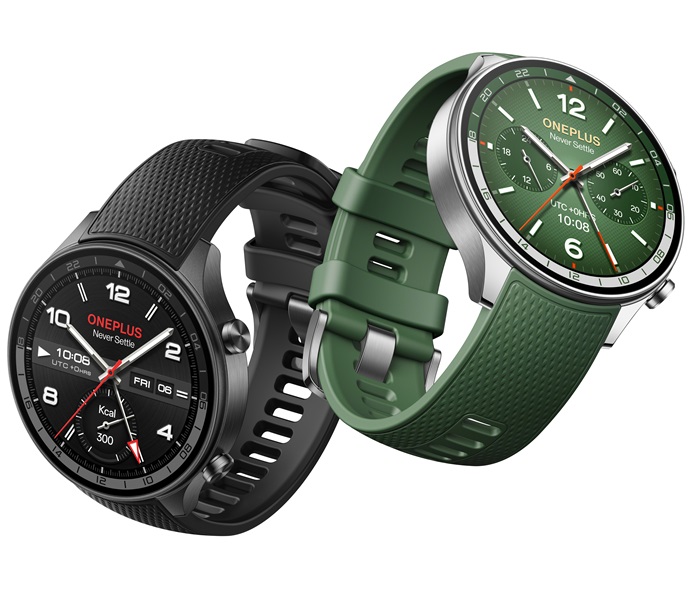
Affordable Wear OS fitness watch
The OnePlus Watch 2R has a Snapdragon W5 CPU, 500mAh battery, 1.43-inch display, dual-band GPS, NFC tap-to-pay, Google Assistant, and detailed post-run metrics. It's not as stylish or rugged as the original Watch 2, but it's much lighter, more affordable, and seemingly lacks the same HR issues.

Michael is Android Central's resident expert on wearables and fitness. Before joining Android Central, he freelanced for years at Techradar, Wareable, Windows Central, and Digital Trends. Channeling his love of running, he established himself as an expert on fitness watches, testing and reviewing models from Garmin, Fitbit, Samsung, Apple, COROS, Polar, Amazfit, Suunto, and more.
You must confirm your public display name before commenting
Please logout and then login again, you will then be prompted to enter your display name.
